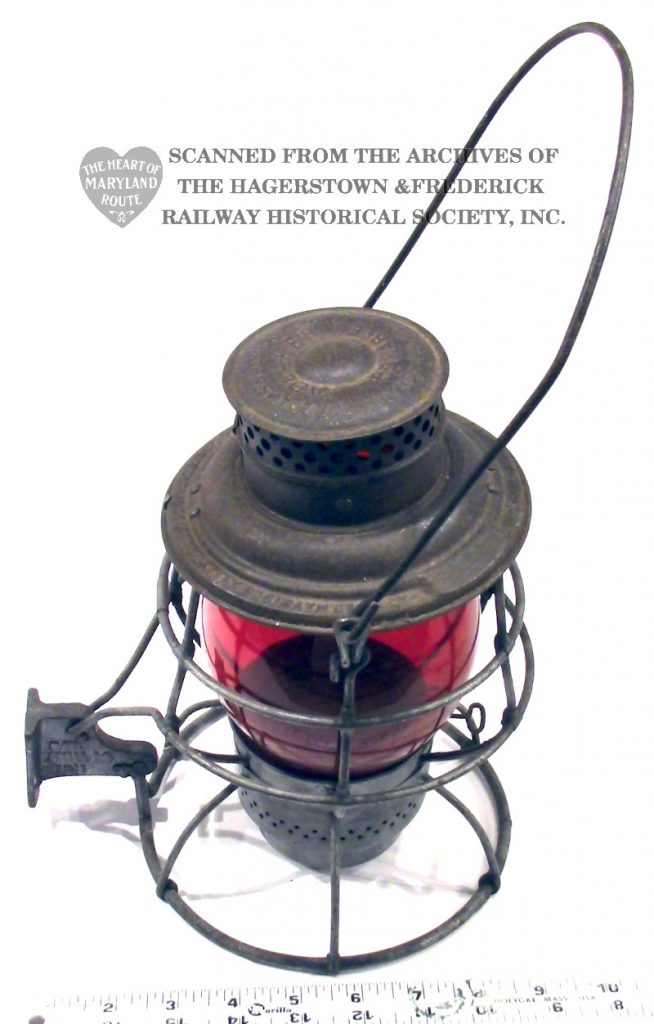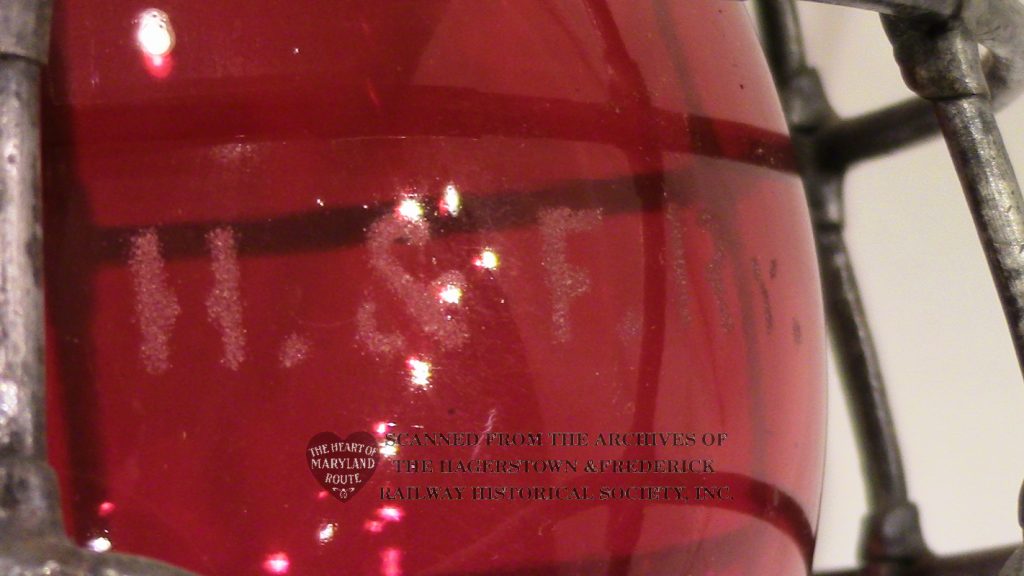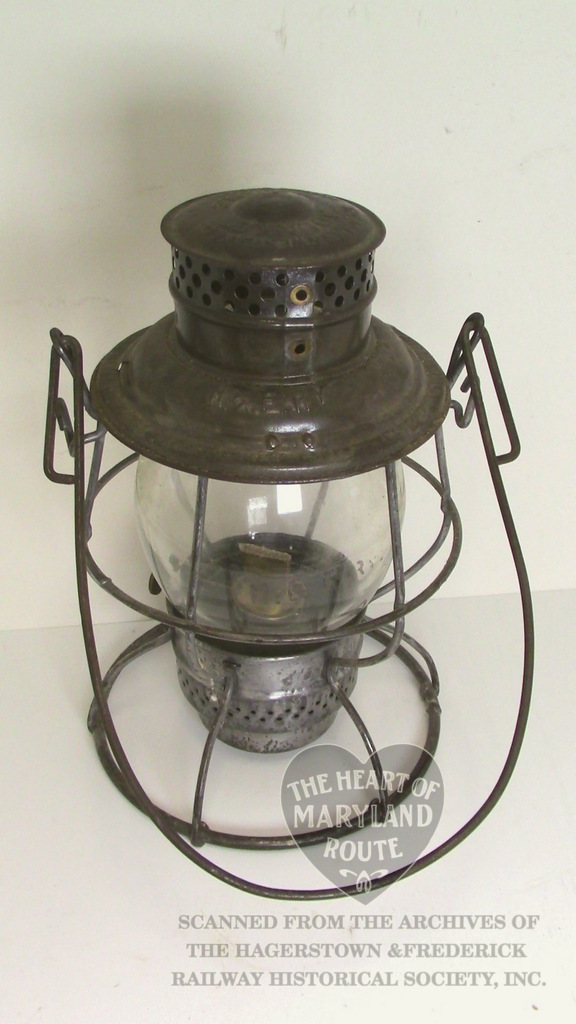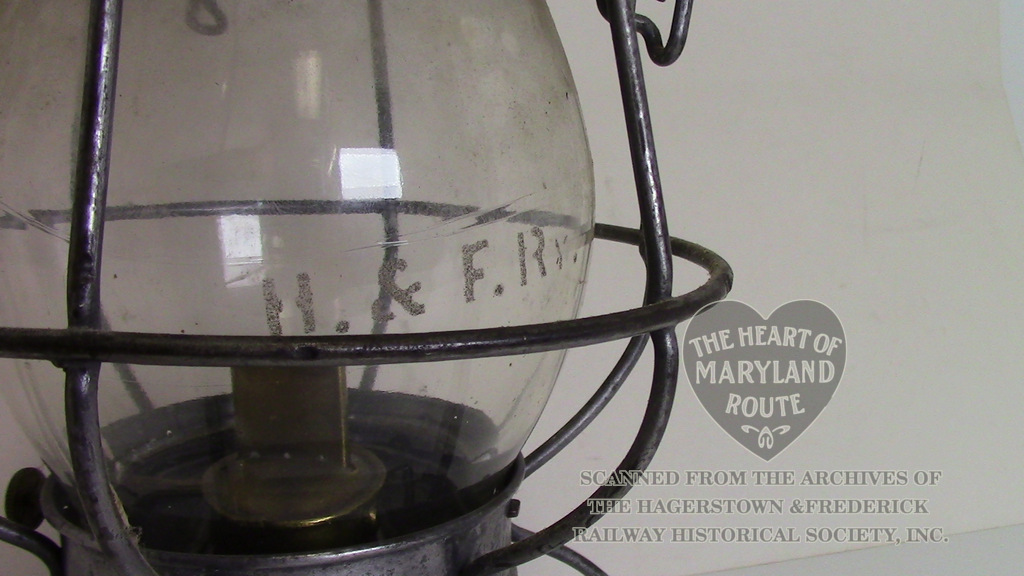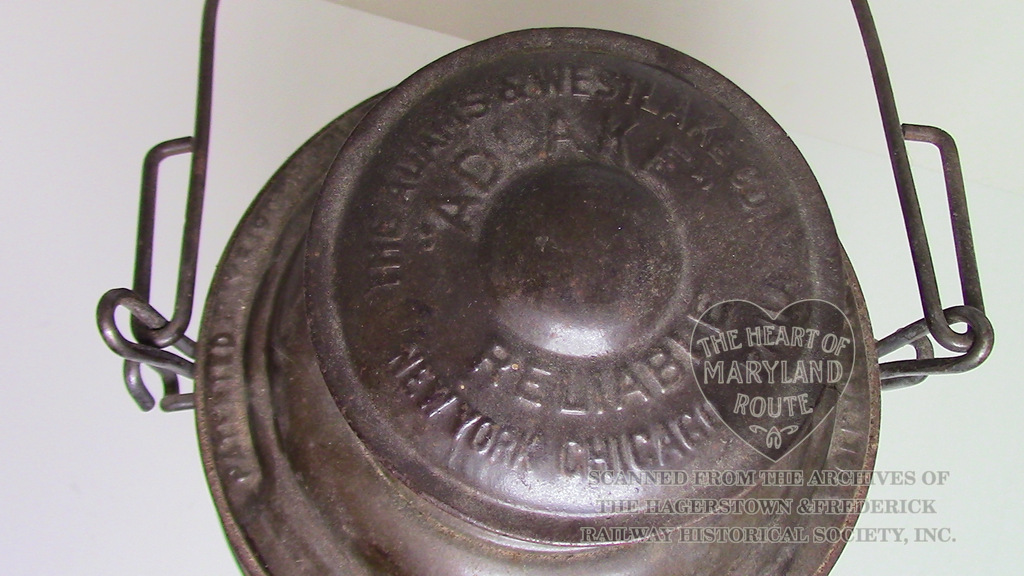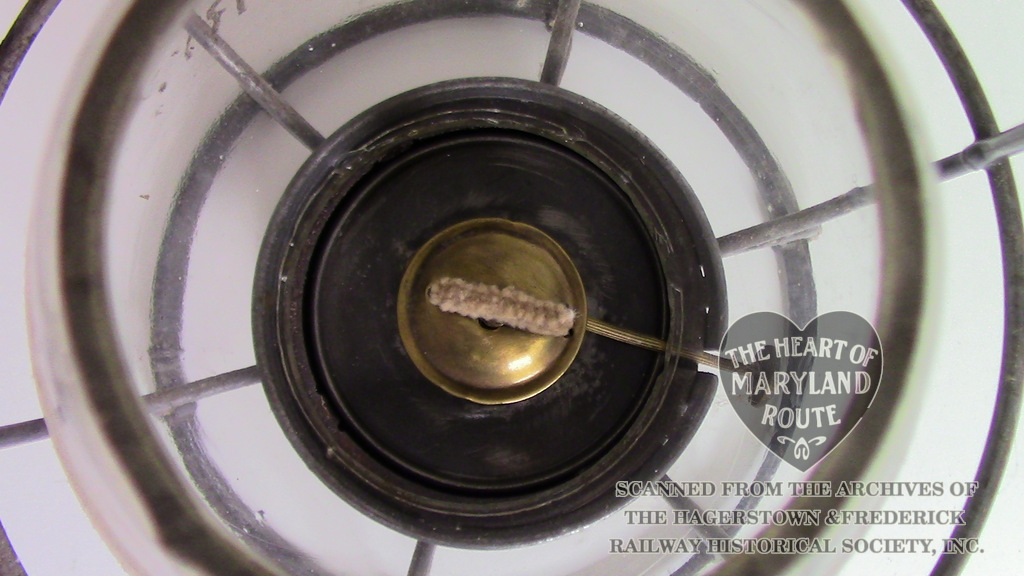Trolley Parts and Uniforms
Items 1-3 – Fare Registers
To learn about he Ohmer and International registers, including videos of the machines functioning and original patent diagrams, visit the page dedicated to the Fare Registers by Clicking Here.
4 – Handle from interurban combine seat
This and other similar shaped handles were found on the aisle corner of every trolley seat. When the car reached the end of the line, the motorman would walk down the aisle and use these handles to pull the seat back and change the direction that the seats were facing for the next trip.
5 – Trolley Pole Hook
The hook that you see before you was mounted to the top of a trolley, believed to have been removed from H&F #172, and was used to keep the trolley pole in place while not in use. Trolley poles are kept under spring tension in order to keep them pressed against the overhead wire. The pole would be cupped into the hook by this tension to prevent damage when that pole was not in use.
You can see both pole positions and hooks on the roof of #170 in the image in this gallery below.
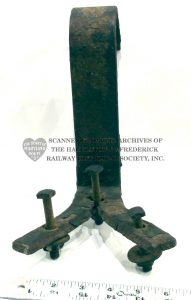

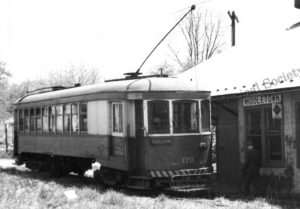
6 – Trolley Step Handrail
This railing was mounted at a 45 degree angle to the inside of one of the trolley doors and used by people climbing the steps of the car. It is believed to come from car 172.
7 – Fender Chain Hook
The fender is the basket-like device hanging on the front of a trolley. Like a “cow catcher” on a steam train, the fender is designed to catch anything or anyone who might be in the way to prevent them from being pulled under the trolley car. While they weren’t meant to carry weight, there are documented cases where people occasionally stood or rode on the fender of trolleys on the H&F system – sometimes without permission.
8 – H&F Railway Adlake Switch Lock & Key
Switch tracks, also sometimes called turnouts, are the tracks used to move a train from one set of tracks to another. In order to prevent tampering or unwanted movement, the mechanism for these tracks is often secured with a lock. Several types of locks were used, this is one of the more modern types used by the H&F.
9 – Trainman’s Coin Changer
Worn by the motorman or conductor of the trolley, this was used to provide change when passengers paid a cash fare. It is unknown if this was used by an H&F trainman or that of another railway. It comes from the collection of Carroll James who collected primarily H&F items but who also collected Baltimore and Washington D.C. trolley artifacts.
10 – Express Agency Wax Seal from Myersville
This brass stamp was used in the Myersville trolley station to seal packages and letters being shipped beyond the H&F system by the American Railway Express. Candle wax would be poured onto the opening of the package or envelope and this stamp pressed into the molten wax until it cooled. The stamp left an imprint of the express agency and origin station names in wax which would show if someone had tampered with the object en route.
11 & 12 – Hats and Hat Badges
These badges were worn on the hat or cap of a railway employee to identify their position or an identifying number within the company.
The Hagerstown Railway badge may be among the oldest, that railway existed from 1896 until 1913 and it is unknown when these badges were first introduced.
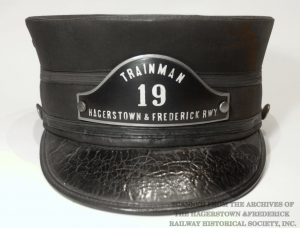
The Hagerstown & Frederick badge bears the same shape badge and was used beginning in 1913. The shape of a later badge style can be seen outlined where it once was installed on the cap below these. You can see another cap with badge still intact in this image.
The Frederick Railroad used leather straps instead of pins to hold their badges in place, and only provided the employee role instead of an identifying number.
13 – Grab Iron from Car #150
This handle was mounted to the outer wall of car 150 between the door and first window. Crew could hold on to the handle when checking clearances or when preparing to climb off and change a switch, and could also make use of the handle when climbing onto the roof of the trolley.
14 & 16 – Window latches
These two objects were latches from cars 150 (smaller) and 172 (larger). Each window had a latch on each side. Passengers would lift on the lever to release the latch and lift the window. Releasing the lever would then lock the window into the nearest of a series of notches in the wood window frame to hold it into place.
15 – H&F Marking Mallet
This hammer-like device could be pressed against a softer object – likely railroad ties and possibly wooden poles – and then struck with a hammer to imprint the company initials into the surface. A previous owner of this object coated it in lacquer which was a common preservation method at one time and causes the abnormal glossy appearance of the tool.

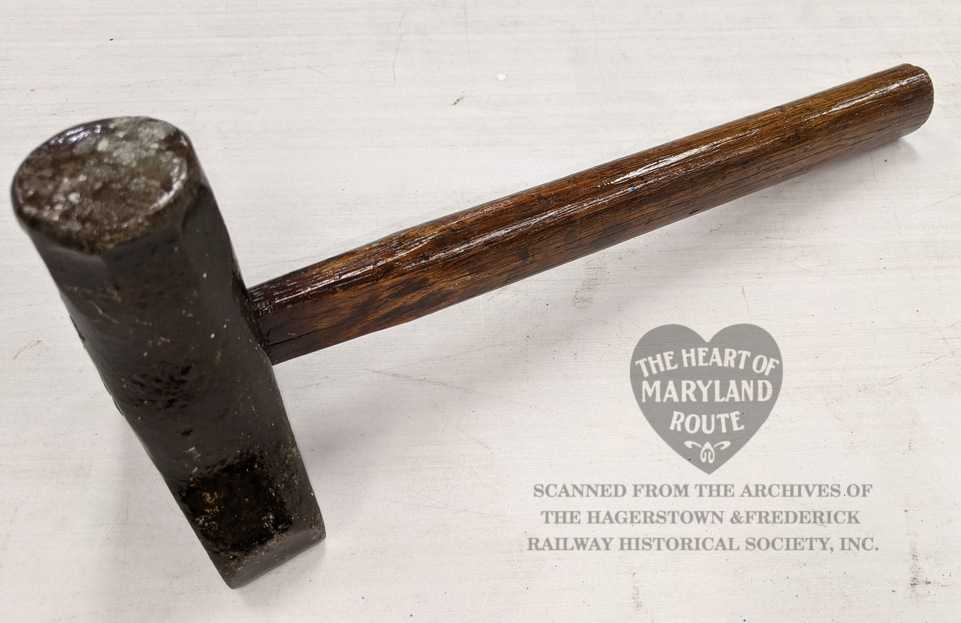
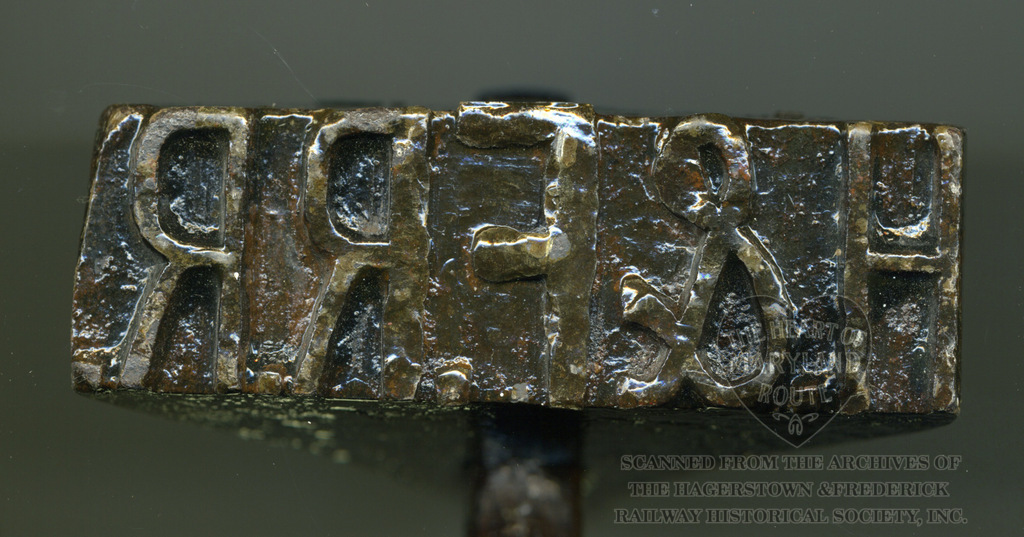
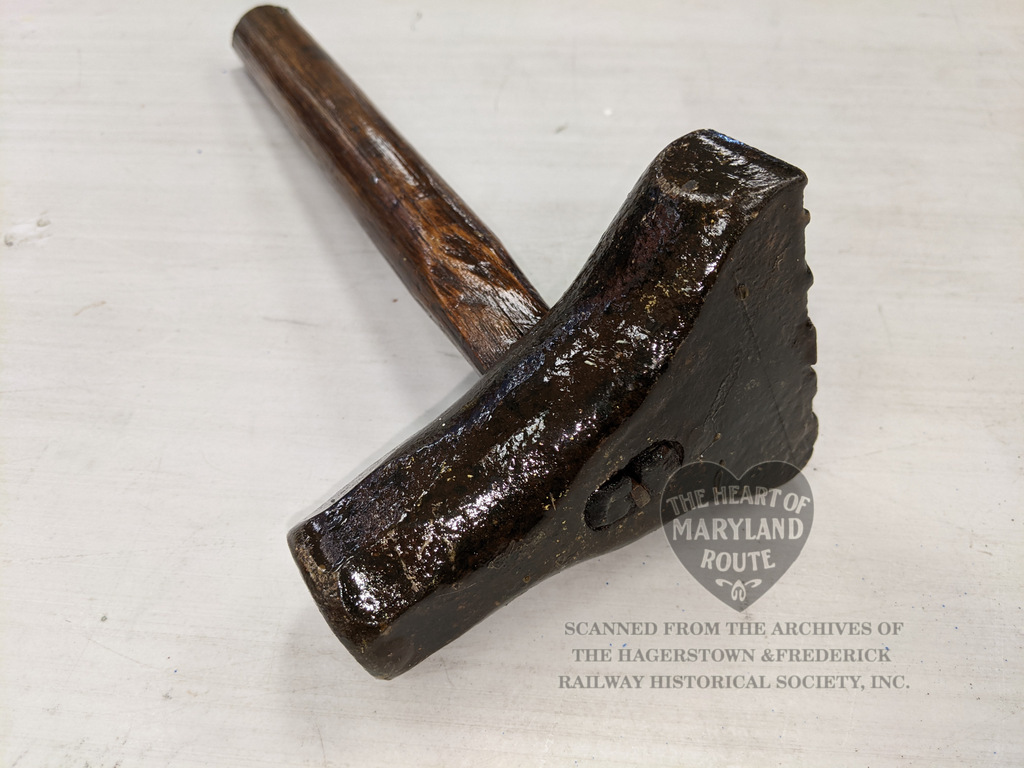
17 – Brackets from Interurban Grab Rail
These two metal brackets, believed to come from car #172, were the top and bottom supports for a wooden handle running vertical on one side of the doorway. There were one or two of these handles per door on most of the trolleys. This handle was used by crew during switching operations and by passengers to hold when first boarding the car before they were able to reach the stair railing attached to the door. See the image in the gallery below of car #172 to find the placement of these grab rails on the car. The green is believed to have been repainted since removal from the car.
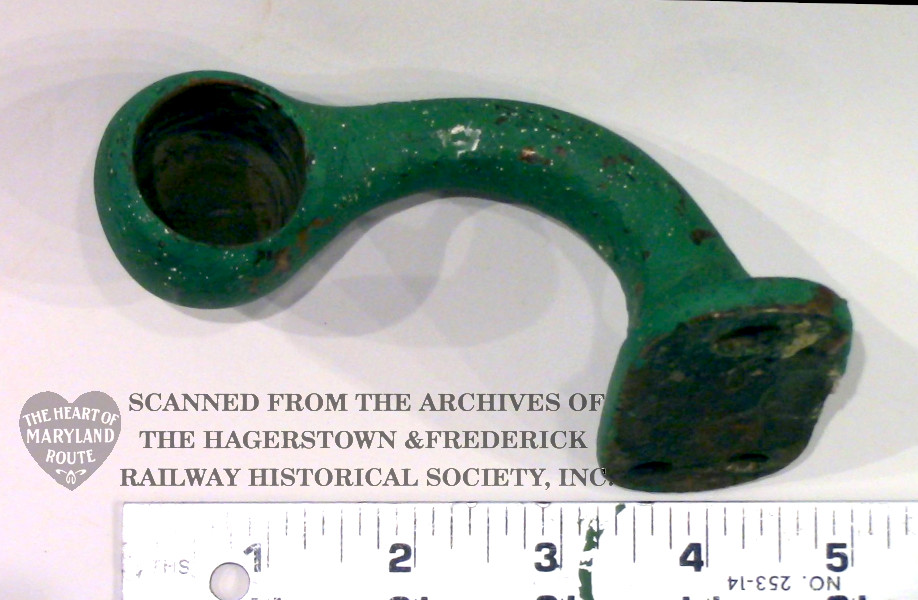
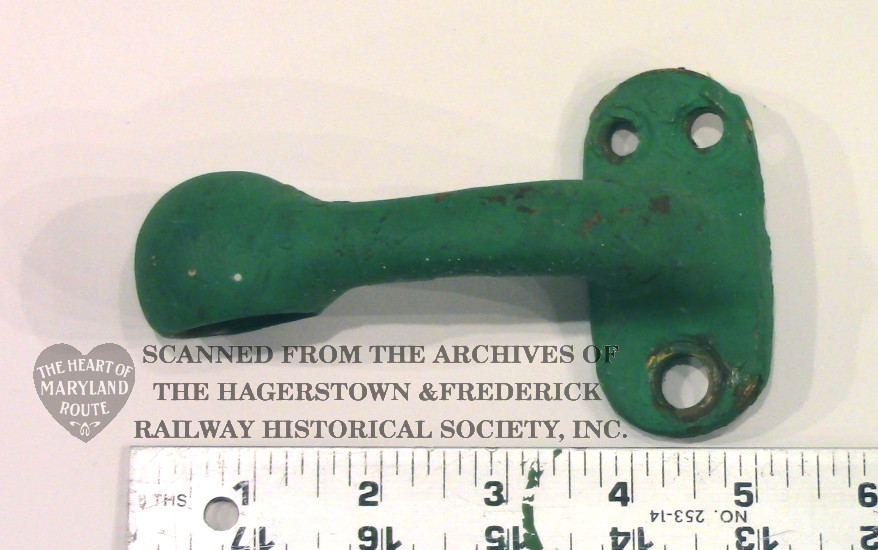
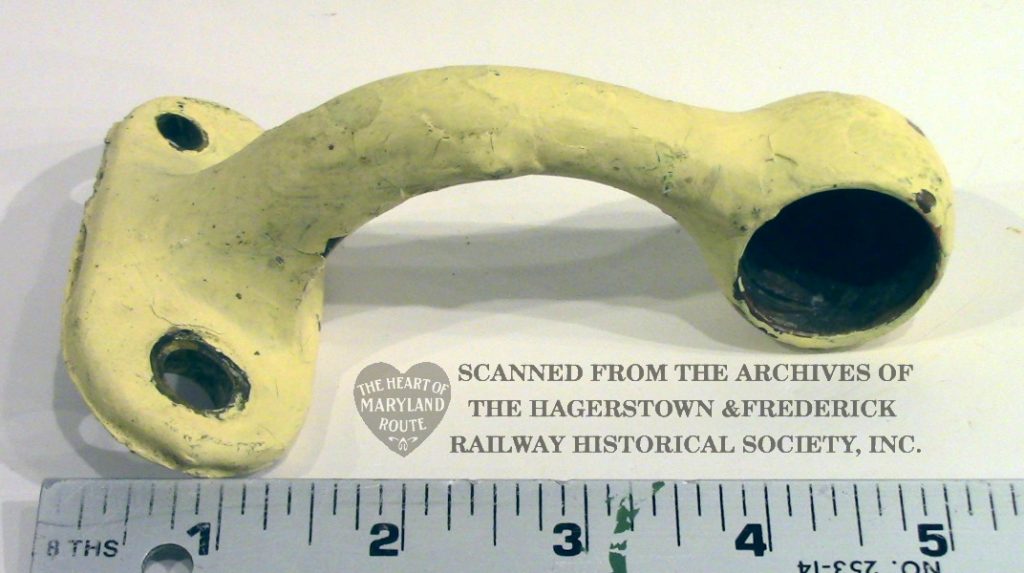
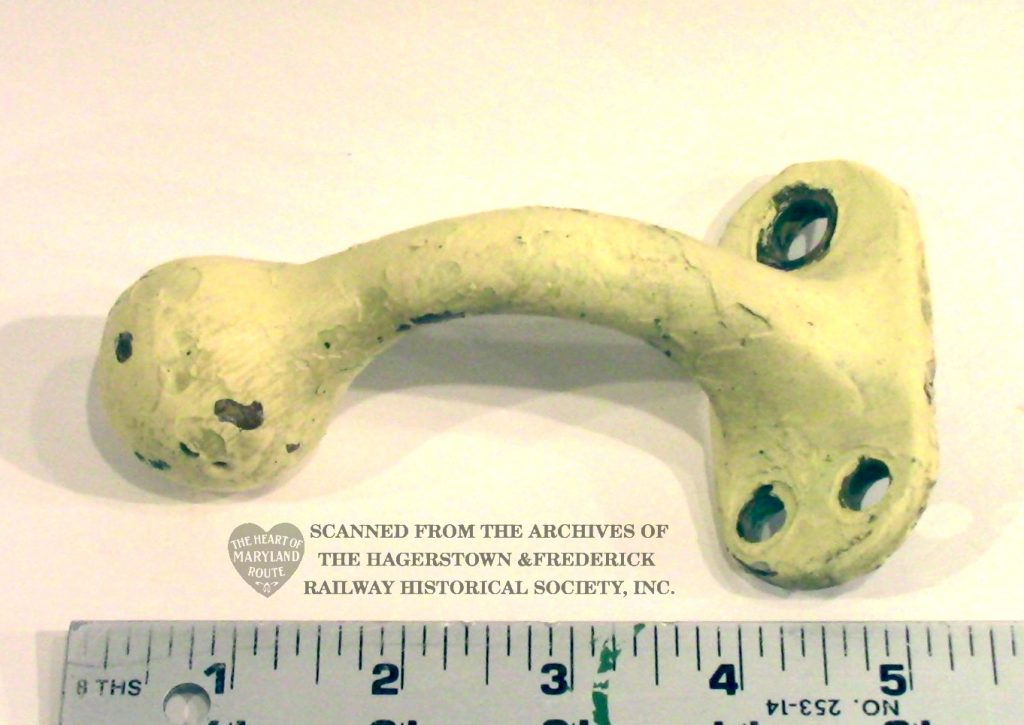
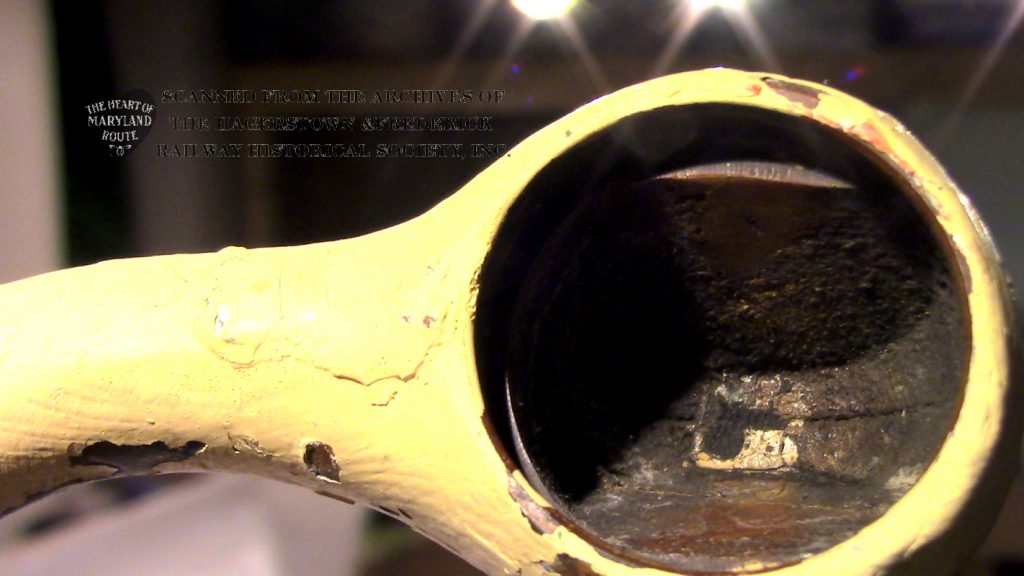
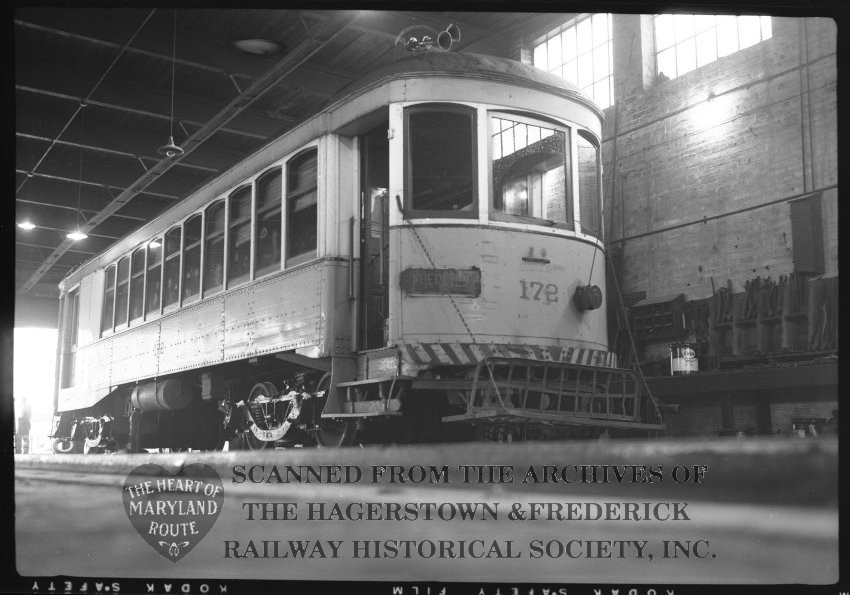
18 – Door roller from car #172
This canister like object was attached to the top corner of a door on car 172 and rolled inside of a track above the door frame. This allowed the door to smoothly open and close in an accordian-like movement. Ask for a demonstration of the door in our “Last Trolley” Exhibit at the end of the tour.
Controlling a Trolley
A – Trolley Physical Hand Brake Handle
This large brass handle essentially served as a parking brake and physical brake for the trolley. These were mounted to a vertical shaft beside the other trolley controls at each end of the trolley. Unlike the air brakes, which used air pressure that could be more easily adjusted to control speed, this brake was attached to chains which pulled against brake pads. The shaft the handle was mounted to had a ratcheting system at floor level to lock its position. It is believed to come from car 172.
B – Trolley Air Brake Handles
These handles were used in different cars and are similar to air brake handles from regular railroad equipment. A vertical column with valves would rise in the center of the driver control area and these handles would fit to the control of that mechanism. The motorman would gently adjust the air pressure this handle controlled in order to manage the speed of the trolley car.
C – Trolley Reverser Key
This clip type tool was inserted around a square peg on the control column and used as the lever to move that peg forward or backward. This changed the direction of the electrical flow to the motors in order to change the direction of the trolley.
D – Ohmer Cab-End Register Controls
This vertical pole assembly was part of a continuous series of rods and rope running the entire length of a trolley. These controls came out of #172 and may be the exact same assembly seen in the exhibit photograph.
The grooved handle could be gripped and rotated so that the arrow at the bottom of the pole would point to the desired amount being paid by the passenger. The poles running the length of the car would all be rotated at the same time which changed all other indications in the car (see item #2).
The handle could then be pulled, which in turn pulled the rope that also ran the length of the car and recorded the amount selected onto the register. The chime of the register bell from the passenger compartment would indicate that the record had been made.
Visit the page dedicated to the Fare Registers by Clicking Here.
E – Hand Signal Lantern (Clear Globe)
This lantern is both etched with “H&F RY” on the glass globe as well as stamped on the lid of the lantern. These were essential for early mornings and late evenings, but could be used at other times, and allowed crew on the ground to give visual signals and instructions to motormen and conductors on board trolleys. These lanterns are kerosene fueled and came in several styles and colors. Colored lanterns could be placed on or near trolleys or train cars to provide warnings or special instructions to crews.
At the bottom of the exhibit case, you will see another hand lantern with a red globe. The globe on this lamp is also etched for H&F however the lantern itself is not stamped. This lantern could be used similarly to the white globe, and the red color could be placed at the back of a train or trolley to tell approaching trolleys that it was ahead on that track, while a green lantern could indicate the front. Unlike most of these lanterns, this version has a foot for hanging in a bracket similar to that of the marker lanterns hanging on the walls of the museum. In later years car 172 is pictured with a bracket on its bumpers for holding one of these lantern, and this lantern may have been used on that car.
